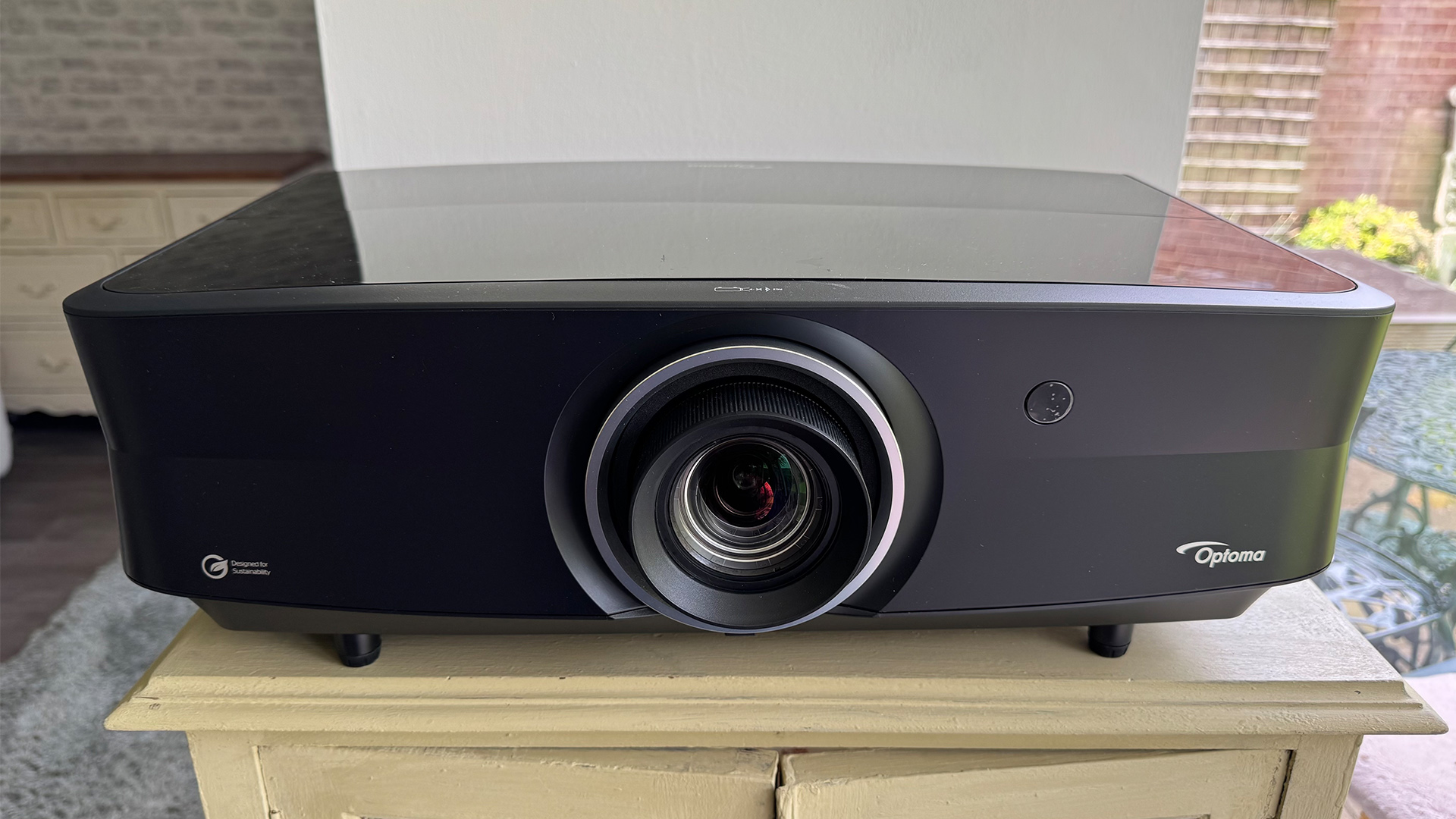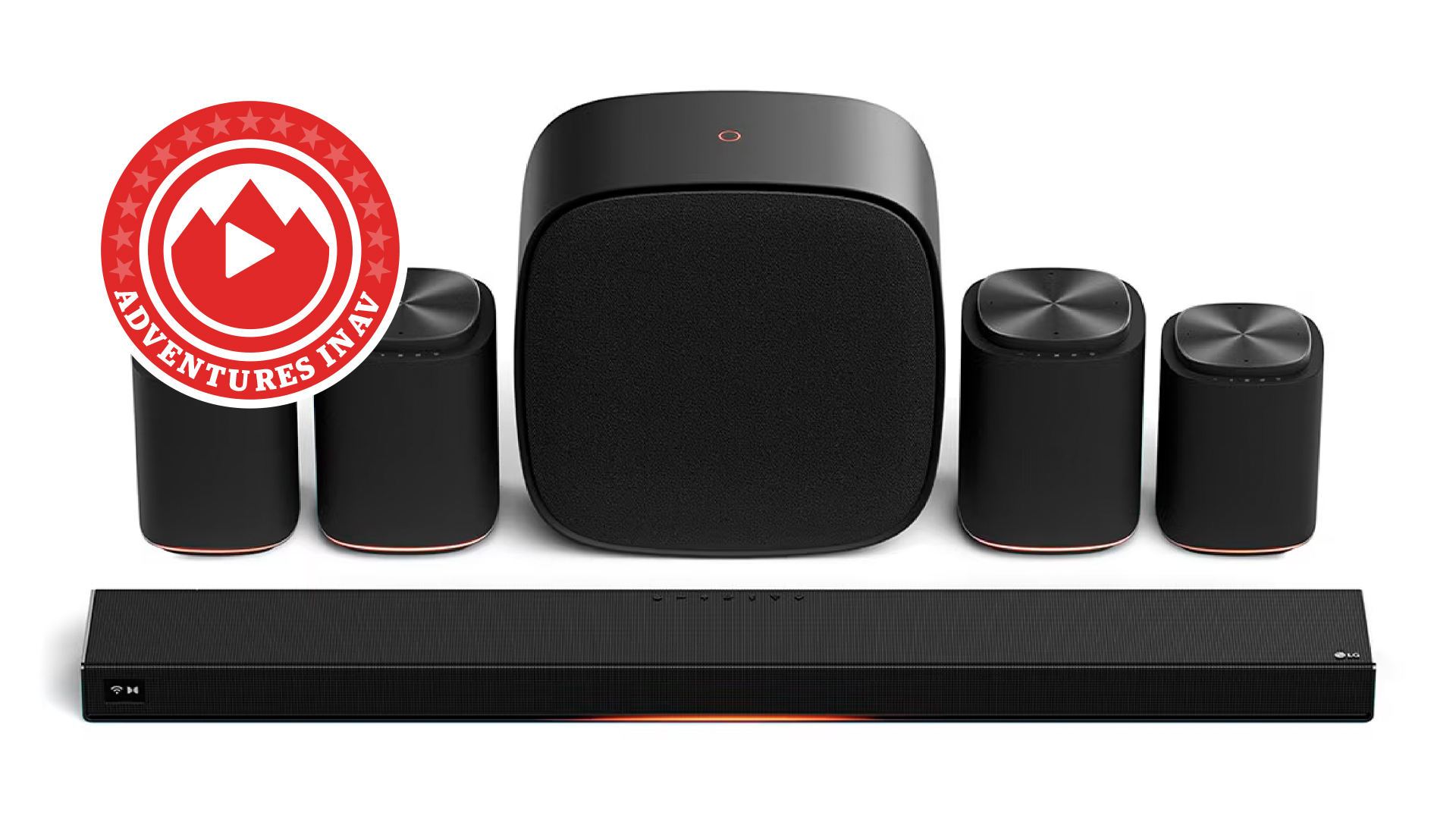What Hi-Fi? Verdict
While it could maybe work as an expensive living room projector, the UHZ68LV doesn’t quite make the home theatre grade
Pros
- +
Capable of very big, bright pictures
- +
Supports both HDR10+ and Dolby Vision
- +
Plenty of set-up flexibility
Cons
- -
Pictures lack contrast
- -
Quite strong rainbow effect
- -
Sound feels like an afterthought
Why you can trust What Hi-Fi?
Optoma’s latest home entertainment projector sure knows how to grab your attention.
Big numbers such as 30,000 hours of uninterrupted viewing from its dual laser light engine, 95 per cent coverage of the most common HDR colour spectrum and a huge claimed 5000 lumens of maximum brightness all raise hopes that the UHZ68LV will have more than enough in its picture quality locker to stand out from the mid-range projector crowd.
Add to all of the above the fact that it’s the first projector we’ve seen that supports both of the premium Dolby Vision and HDR10+ high dynamic range video formats, and the UHZ68LV sounds almost too good to be true…
Price
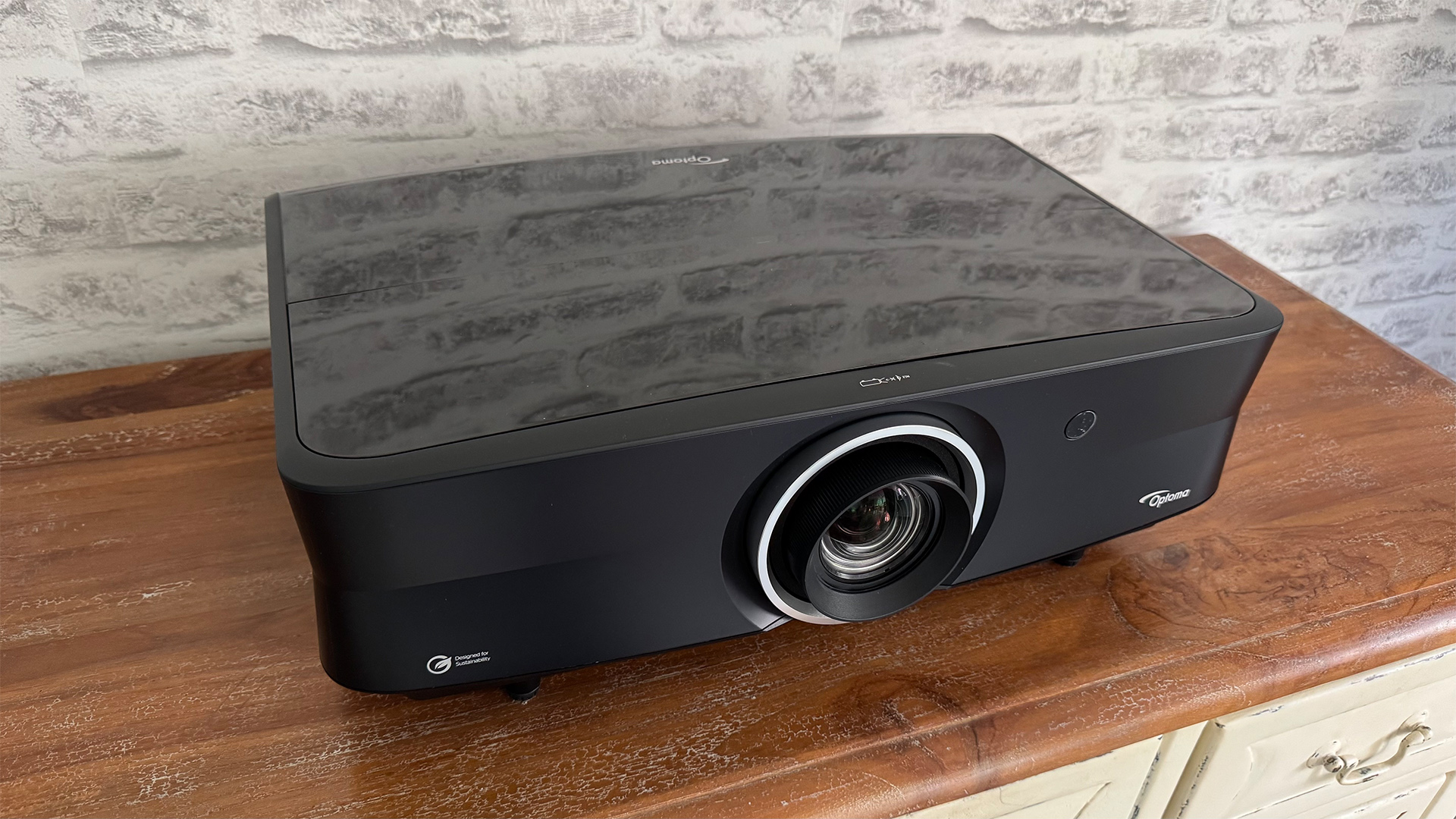
The UHZ68LV’s £3999 / $5999 price places it relatively high up in Optoma’s current home projector range, and establishes it as a fairly serious home entertainment proposition at a time when even the upper end of the casual projector market tends to come in at below half that.
So it’s likely either a dedicated home cinema room projector or, possibly, with its 5000 lumens brightness, a lifestyle projector for a particularly large and bright living room along the lines of some of the premium Ultra Short Throw projectors we’ve seen. Except that it isn’t a UST model.
Rivals in the same sort of ballpark would be the excellent Epson EH-QB1000B and equally impressive BenQ W5800. The UHZ68LV is going to have to pull out all the stops to keep up with such illustrious company.
Design
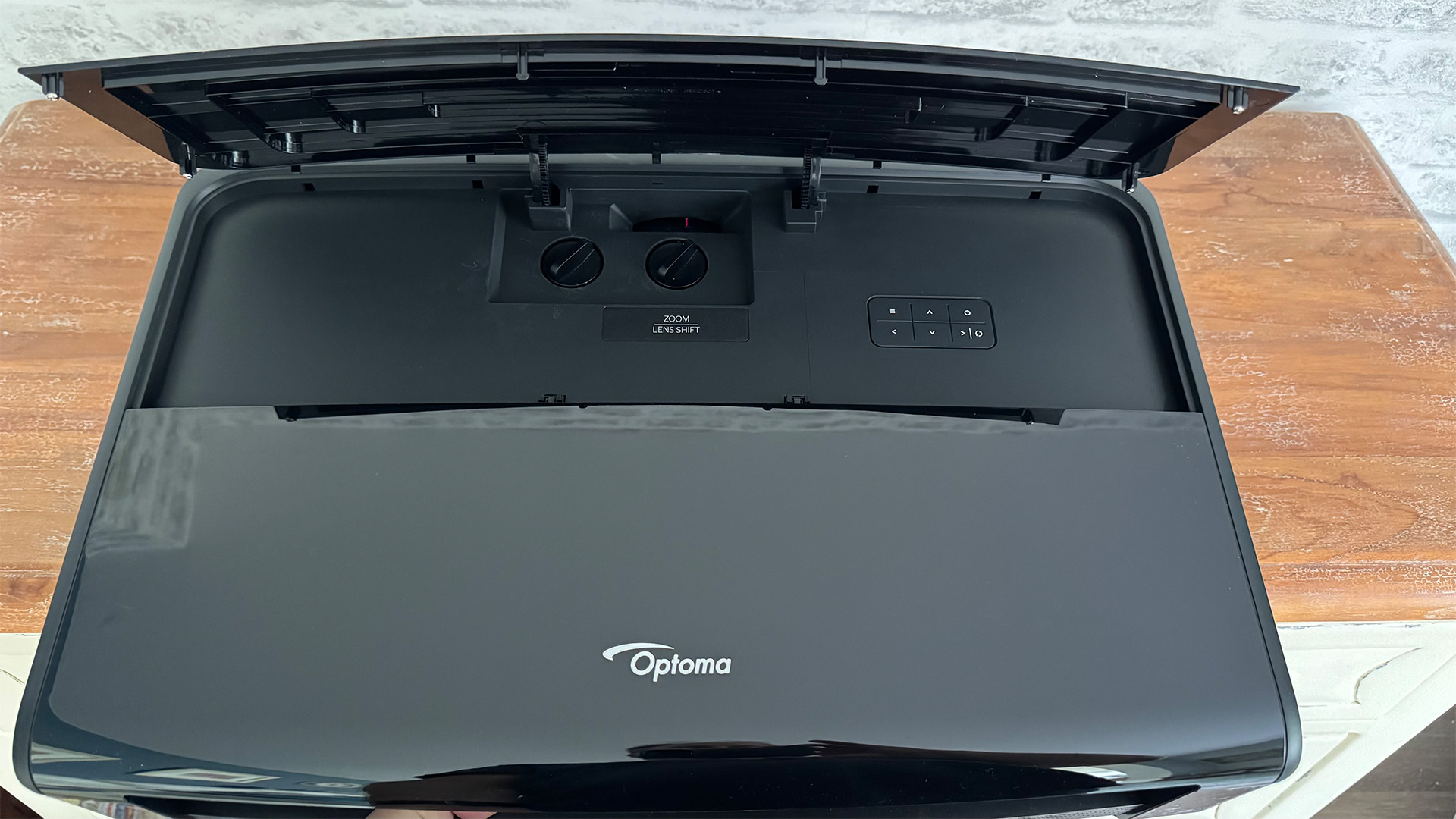
The UHZ68LV’s design manages to look stylish while simultaneously leaving you in no doubt that this is intended to be a serious bit of home entertainment kit.
The latest hi-fi, home cinema and tech news, reviews, buying advice and deals, direct to your inbox.

Projector type Dual-laser DLP
Screen size Up to 302 inches (claimed)
Native resolution 4K (via DLP XPR technology)
Input lag 17ms (60Hz)
HDR support HLG, HDR10, HDR10+, Dolby Vision
Dimensions 17 x 50 x 33cm
Weight 9.2kg
It leaves a large footprint, indicating both some relatively uncompromising optics and, hopefully, a good integrated exhaust system for limiting the heat and noise from its cooling fans. The lens at the centre of its front edge is large, too, raising hopes of relatively uncompromised clarity from the projector’s claimed 4K resolution.
While the black finish of the majority of the bodywork is designed to blend into a proper dark home theatre room, a mixture of slightly different finishes (including a highly reflective gloss top panel), a slightly curved top edge and some eye-catching angular indents on the front and side edges ensure that it doesn’t look ugly with the lights on.
The unusually small remote control you get with the UHZ68LV isn’t the easiest thing to spot in a dark room. Its buttons are backlit, though, and their layout is reasonably logical and spacious.
Features
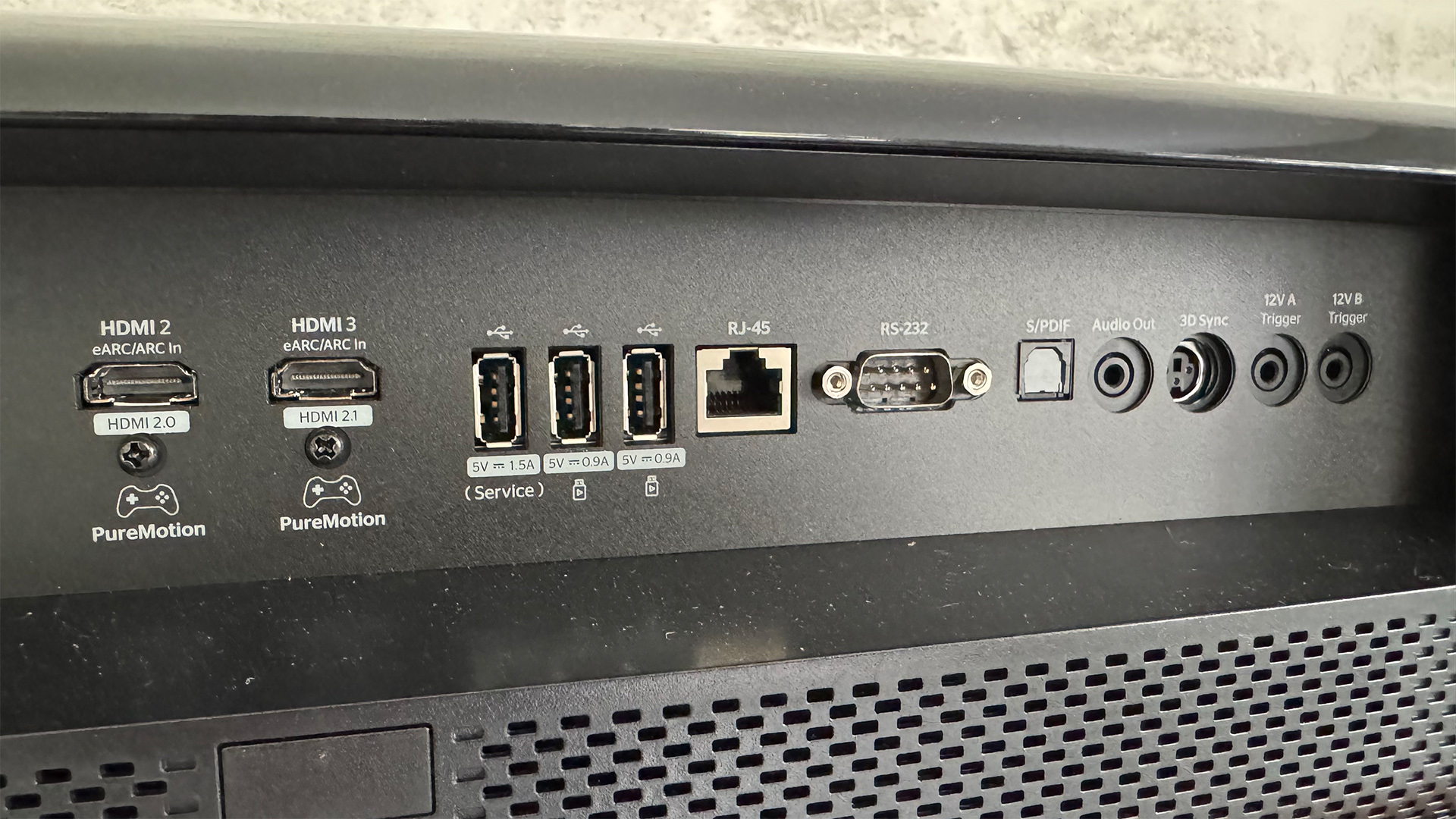
The UHZ68LV is packed with premium features and specs – so much so that its price (in the UK, at least) has the potential to end up feeling like a bargain.
The 5000 lumens Optoma claims the UHZ68LV can get out of its dual laser light engine lies at the heart of its appeal, beating the light output of the previously mentioned Epson QB1000B and BenQ W5800 rivals by a mighty 1700 and 2400 lumens respectively.
Optoma choosing to push the UHZ68LV’s brightness to such an extreme level can indicate two things: either it wants its projector to reach areas of performance with home cinema-friendly HDR content that projectors typically can’t get to, or it wants its projector to be able to punch through quite high levels of ambient light in a regular living room environment.
The UHZ68LV ultimately feels much more tuned and set up for the home theatre scenario than the bright room one. It’s not exactly portable enough, nor easy enough to set up, to easily cart between different rooms, while its colossal 3,200,000:1 claimed contrast ratio certainly sounds like something designed with the extreme contrast of serious movie nights in mind.
Its support for 4K resolution playback courtesy of DLP projection’s so-called XPR technology (a system the US Consumer Technology Association considers to deliver a true rather than pseudo 4K experience) also confirms a willingness to take on board the best quality sources the AV world currently has to offer. Something that’s underlined in big red ink by the UHZ68LV’s ability to play both the HDR10+ and Dolby Vision HDR formats, with their extra scene-by-scene picture information.
This essentially means that the UHZ68LV can take in the best version of any content you play into it. Supporting either of these premium HDR formats is still rare in the projector world; supporting both is unprecedented where What Hi-Fi’s test rooms are concerned.
The claimed ability to cover 95 per cent of the DCI-P3 colour spectrum typically used in HDR mastering is promising, too – especially as this is apparently delivered without the need to call in a brightness-reducing wide colour filter.
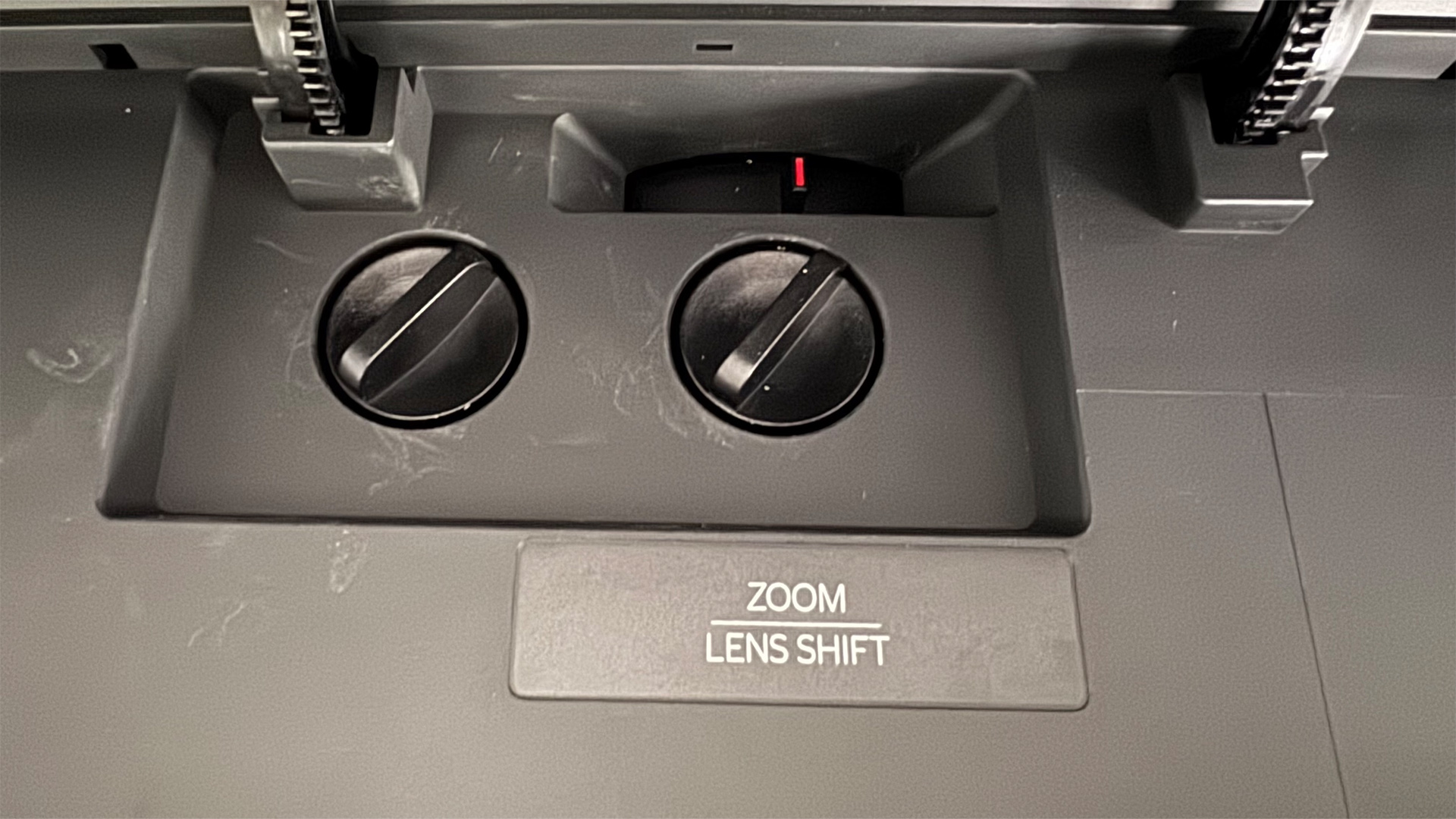
Yet another premium picture quality touch comes with Optoma’s Pure Engine Ultra system. This includes colour calibration by Optoma’s in-house image experts, contrast and detail enhancements, and an impressive array of setting options that let you customise many of the most critical picture quality elements.
Setting the UHZ68LV up doesn’t reveal one of those clever full auto-image optimisation systems we’re starting to see on most of the more obviously portable/convenience-based projectors these days. Optoma does, though, provide a decent array of manual set-up aids, including 1.6x optical zoom, four-corner correction, and adjustments for optical horizontal and vertical image shifting housed under a pop-up flap on the projector’s top edge.
The UHZ68LV doesn’t carry any built-in smart features, but further underlining its home cinema focus, it does carry both a Filmmaker Mode image preset and support for full ISF calibration.
Its connectivity is mostly excellent, headed up as it is by three HDMIs rather than the two that most projectors stop at. All of these HDMIs support eARC audio, including the ability to pass-through Dolby Atmos sound to a connected soundbar or AVR, and one of them is a 2.1 port capable of handling 4K/120Hz game feeds.
There are also a pair of powered USB ports; optical digital audio and 3.5mm audio line outs; a 3D Synch jack for adding an optional 3D transmitter if you’re still into watching stuff in the third dimension; as well as RJ45, RS-232C and two 12V trigger ports for integrating the projector into a home control network.
While there’s no support for VRR or Dolby Vision HDR at anything higher than 60Hz refresh rates, the UHZ68LV does carry a low-latency mode for gaming with all sources, including Dolby Vision.
In fact, it provides both Low Latency and Ultra Low Latency options. The ultra low latency option turns off the aspect ratio, Edge Mask, Digital Zoom, Image Shift and Geometric Correction set-up features, on top of the various processing features already turned off by the basic Low Latency setting. In Low latency mode, input lag measures 34.7ms at 60Hz, while in Ultra Low Latency mode, this drops to an extremely speedy (for projectors) 17.8ms.
Picture
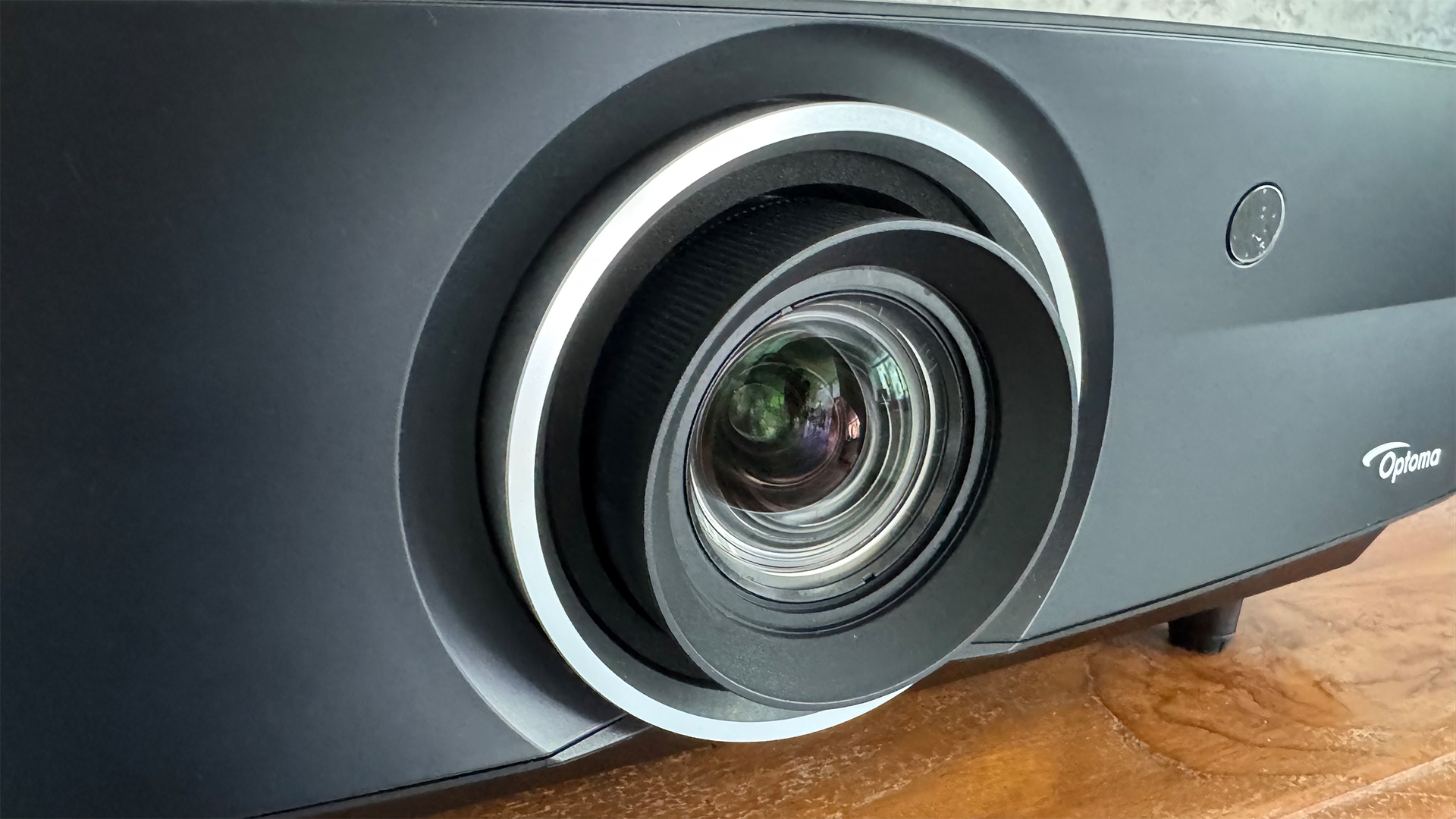
Unfortunately, no amount of picture adjustments or promising tech specs can save the UHZ68LV from a couple of pretty major picture-quality shortcomings.
First and worst, as we’d feared might be the case, the projector’s huge brightness comes at the expense of the sort of contrast and black levels during dark scenes we now like to see from a projector with such seemingly serious home cinema ambitions.
Dark scenes look routinely washed out and grey, especially using the 100 per cent power option that’s the default across all picture presets when the projector is receiving HDR content. In fact, as well as the greyness leaving dark scenes looking generally unconvincing and uncinematic, it’s potent enough to cause subtle shadow details to become lost in the general cloudiness, robbing the image of depth and texture.
The other major issue with the UHZ68LV’s pictures, again at least partly related to its extreme brightness, is the DLP rainbow effect. This finds stripes of pure red, green and blue flitting over bright highlights, and while susceptibility to seeing it can vary from person to person, in the UHZ68LV’s case, everyone on the What Hi-Fi? team who watched the projector for any amount of time commented on how obvious and distracting the issue was with HDR sources.
Both the washed-out black levels and, to a lesser extent, the rainbowing problems can have their impact reduced by shifting away from the default 100 per cent Brightness HDR setting and choosing one of the three provided Dynamic Black light output settings instead. All three Dynamic Black options significantly dim HDR images down, though, so that even the gentlest Dynamic Black 1 option ends up denying you a substantial amount of the brightness that you were probably excited about when you bought the projector.
The darkest Dynamic Black 3 option takes so much light out of the picture that it leaves dark scenes almost unwatchable. As does the Dolby Vision Dark option that becomes available with Dolby Vision sources.
Trying to improve black levels by simply reducing the UHZ68LV’s brightness setting doesn’t really work; all that happens is that you get the same greyness but with less visible picture detail. This proves that the UHZ68LV’s black level limitations are pretty deeply ‘baked in’, rather than just something you can fix in the settings.
While the Dynamic Black 1 option is probably your best bet with HDR10 sources, its automatic brightness optimisation system can introduce a touch of instability into dark scenes as it struggles to settle on the optimal light level for a particular shot. This is a pretty mild issue in truth, though – and it isn’t accompanied by any distracting hyperactivity from the built-in cooling fans.
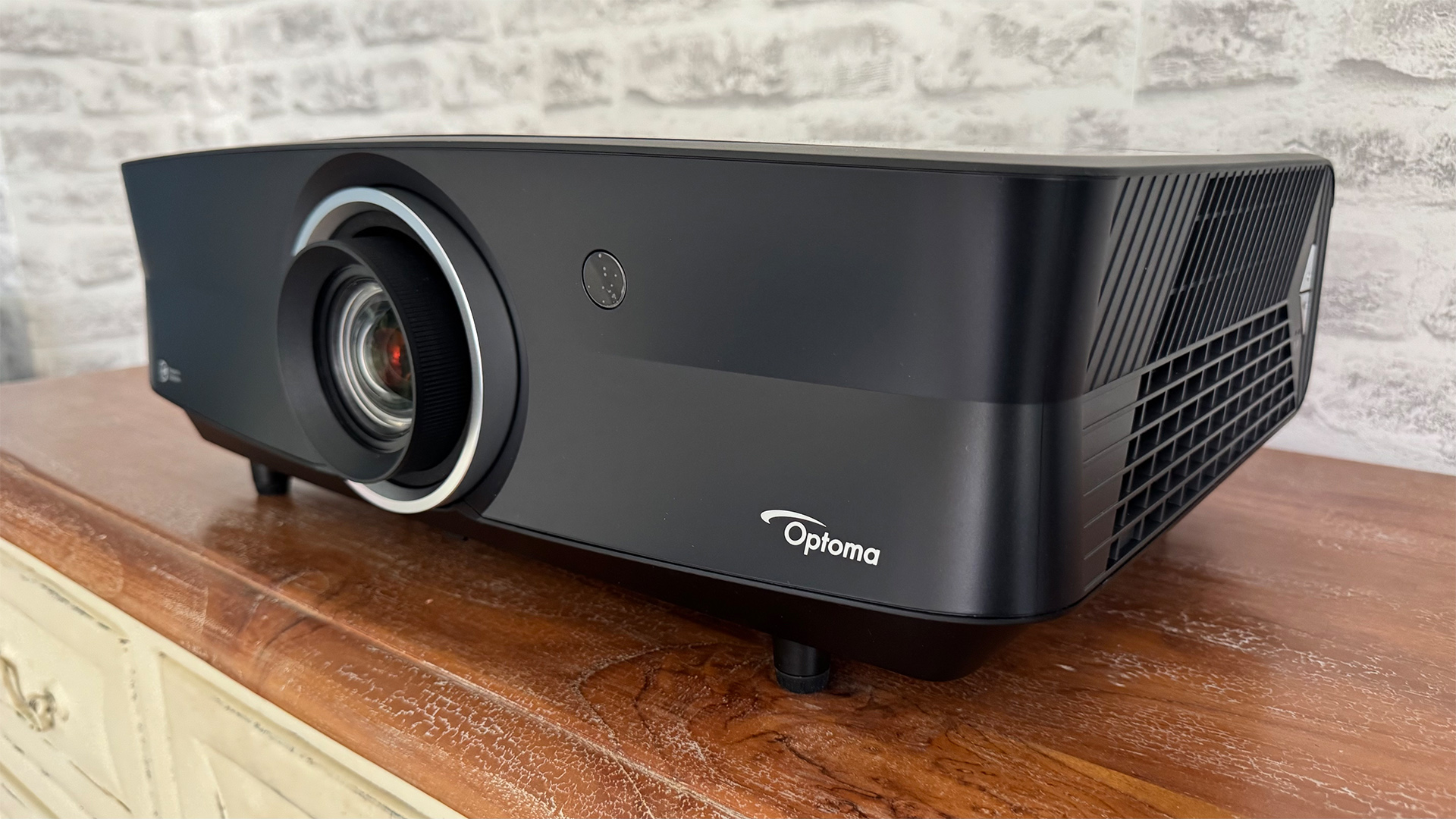
In fact, we can start the good news part of the UHZ68LV’s performance by saying that it runs remarkably quietly by any projector standards, never mind one capable of pumping out 5000 lumens.
That brightness makes its presence felt with bright HDR content as you would hope, delivering it with more impact and punch than the vast majority of projectors sold at the happy side of £5000 / $5000 manage.
This brightness also unlocks some formidable colour vibrancy and volume for the projector world, and while tones (especially skin tones) during dark scenes don’t always look totally natural, there’s enough subtlety in the overall colour presentation to prevent pictures feeling flat and cartoonish. Unless you’re actually watching a cartoon, of course.
The UHZ68LV’s expressive colours help bright HDR scenes look reasonably sharp and detailed, too. Not quite class-leadingingly so, but enough to ensure that 4K pictures don’t look soft or coarse.
One reason, perhaps, that the UHZ68LV’s pictures only enjoy good rather than emphatic sharpness and detail is that motion with 24fps movies feels a little uncomfortable. Judder is quite strong by projector standards with no motion processing in play, yet while the lowest power option of the provided PureMotion processing can take the edge off this judder, the results can look a little processed and unnatural, as well as suffering from a slight stuttering effect.
Having slipped back in to finding niggles with the UHZ68LV’s pictures, one last quirk that rather undermines one of the projector’s most appealing on-paper attractions is that it consistently delivers better picture quality with relatively basic HDR10 sources than it does with HDR10+ and Dolby Vision sources.
HDR10+ pictures look more washed out in dark scenes, with seemingly less you can do to try and remedy the situation, while the Dolby Vision Bright and Dark presets are affected by a strange green tone – as well as the Dark setting going so dark that the picture almost disappears during dark scenes. Setting the Dynamic Black setting to level 1 reduces this green tone issue with Dolby Vision Bright mode, but again, only at the expense of more brightness than we’d have liked.
Letting us finish this section on a positive note, the UHZ68LV’s punchy approach to pictures and speedy response times make it quite an enjoyable king-sized gaming display, especially with 120Hz titles, and its pictures actually adapt a bit better to SDR playback than we might have expected for a projector so clearly built with HDR in mind.
Sound

Despite its substantial size, the UHZ68LV can’t produce sound that is in any way comparable to the scale of its pictures.
In fact, its sound is so small and quiet, even at maximum volume, that at times you can barely make out even quite key elements in a movie mix. The sound struggles to escape from the projector’s bodywork, too, leaving everything trapped inside and very distant from the onscreen action.
The speakers do at least seem to be working well within their capabilities, meaning there’s no sign of distortion or brittleness in what little sound they produce. In fact, there’s quite a pleasantly rounded tone, with even a hint of bass creeping into play from time to time.
Overall, though, the UHZ68LV’s sound is just so small for such a big and bright projector that we couldn’t help but wonder if it was really worth including it.
Verdict
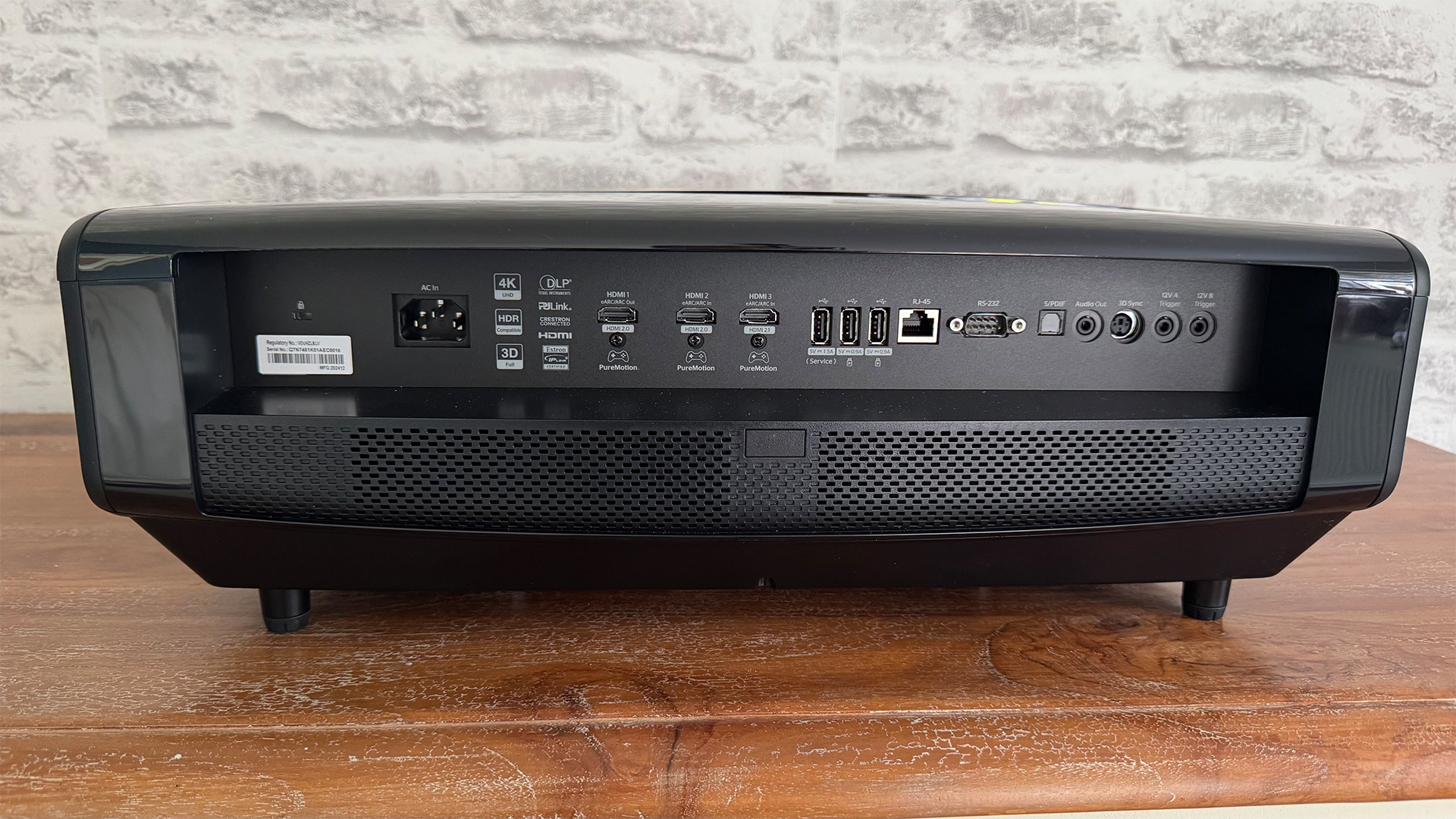
It’s easy to admire Optoma’s ambition with the UHZ68LV. Pushing brightness to the HDR-friendly extremes it does and, especially, supporting all of the current HDR formats so that the projector can always take in the best version of any source are both signs of a brand keen to embrace the next generation of picture quality, no matter how hard that might be.
It’s just a shame that the UHZ68LV’s push for HDR glory hasn’t been joined by more of the picture balance that really brings cinema home.
SCORES
- Picture 3
- Sound 2
- Features 5
MORE:
Read our review of the Epson EH-QB1000B
Also consider the BenQ W5800
Read our Sony VPL-XW5000ES review
Best projectors: budget, 4K and ultra-short-throw
John Archer has written about TVs, projectors and other AV gear for, terrifyingly, nearly 30 years. Having started out with a brief but fun stint at Amiga Action magazine and then another brief, rather less fun stint working for Hansard in the Houses Of Parliament, he finally got into writing about AV kit properly at What Video and Home Cinema Choice magazines, eventually becoming Deputy Editor at the latter, before going freelance. As a freelancer John has covered AV technology for just about every tech magazine and website going, including Forbes, T3, TechRadar and Trusted Reviews. When not testing AV gear, John can usually be found gaming far more than is healthy for a middle-aged man, or at the gym trying and failing to make up for the amount of time he spends staring at screens.
You must confirm your public display name before commenting
Please logout and then login again, you will then be prompted to enter your display name.
